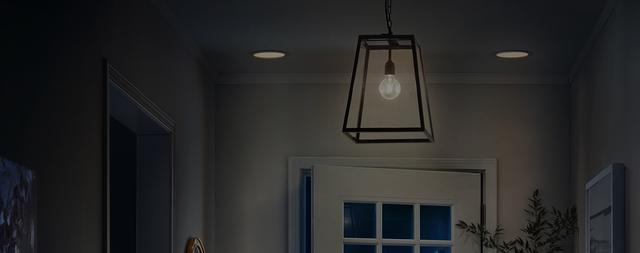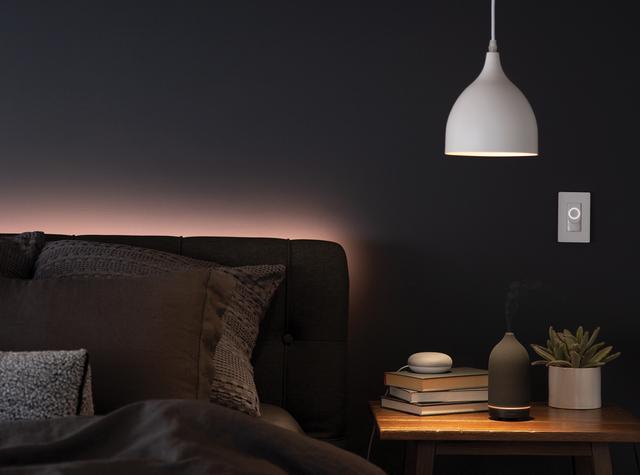Welcome! We’re glad to see you’re curious about using LED bulbs in your home. LED lights are the most energy-efficient light bulbs available. Although they’re more expensive up front, they have a longer life and save you more money on your energy bill than other bulbs. Plus, they come in an almost endless variety of colors, shapes, and sizes to fit all your home lighting needs.
With so many options, choosing the right LED can be overwhelming—different types of LEDs have different uses. In this guide, we’ll work together to choose the best LED lighting option for you.
Best uses for LED bulbs around the house
The first thing to consider when choosing an LED is where it will be used in your home. LED lights are a great addition across the whole house, but you may desire a unique style or capability from your bulb depending on the room. Some LEDs can add a crisp, clear light to a home office, such as with our refresh™ HD LED Bulb, or some can add a warmer light to bedrooms and living rooms, like with our relax™ HD LED Bulb. To keep with your home’s decor, Vintage LED bulbs adds a timeless accent with maximum efficiency. LED color-changing lights offer an energy-efficient way to experiment with your style. LED strip lights and wireless LED strip lights work well under cabinets, behind the TV, or along baseboards for customizable ambient lighting. LEDs make stunning yet subtle recessed lights, brilliant spotlights for art and fireplaces, or perfectly customizable reading lamps. They’re also useful for lighting an outdoor walkway or adding extra light in hard-to-reach places. In addition, our LED Grow Light provides the necessary rays to keep houseplants and in-home gardens thriving.
LED bulb shapes and sizes
LED bulbs come in four primary categories: A-shape, reflectors, decorative, and specialty. A-shape LEDs are the most common type and are frequently used throughout the home. When you think of a light bulb, you typically picture an A-shape bulb. Reflectors are often used for outdoor lighting; you’ve probably heard them referred to as flood or spotlights. They’re conical in shape and cast a more defined beam. Decorative LEDs are a stunning addition to wall sconces, chandeliers, or other exposed-bulb fixtures. They’re often smaller to fit within fixtures, but also come in a variety of larger globes or vintage style shapes to complement any home décor style.
LED Bulb Wattage
The U.S. Department of Energy states that LED light bulbs use at least 75% less energy than their incandescent bulb counterparts. LED bulbs typically consume around 10 watts, while incandescent bulbs consume around 60 watts.
If you’ll be using LEDs to replace incandescent or halogen bulbs, it’s important to understand the difference between a watt and a lumen. Watts are a measure of energy consumption. Lumens are a measure of the amount of light produced, where a higher number of lumens indicates a brighter bulb. A bulb’s efficiency is measured in lumens per watt, which describes how much energy it takes to produce one lumen of light. Incandescent bulbs only produce around 15 lumens/watt, while LEDs produce a whopping 75-100 lumens/watt, making them six times more efficient.
To replace an incandescent with an LED, we’ll use that 6:1 ratio. So, if you’re looking to swap a 60-watt bulb, just divide the wattage by 6 to find the equivalent LED. In this case, 60 divided by 6 is 10. So, a 10-watt LED will successfully replace your old bulb.
Warm and cool LEDs
LEDs have diverse capabilities, including a customizable tone. Tone refers to the color quality of light, which is measured in Kelvin (K). Lower Kelvin light, between about 1000 and 4000K, is qualified as “warm light” and has an amber quality to it. Higher Kelvin light, which is anything above 7000K has a blue quality. The range between 4000—7000 Kelvin is relatively neutral in tone. In rooms where you’d like to relax, a warmer tone helps set a cozy mood. In utility rooms, kitchens, and bathrooms, a cooler, clearer light might be more ideal.

LED bulb dimmability and compatibility
Another aspect of LED customization is dimmability, and compatibility with your dimmer switch. Not all LEDs are compatible with every dimmer switch. The best place to look to ensure your switch and bulbs will work together is in the manufacturer spec sheet or dimmer compatibility sheet included with your bulb or switch. If you have any questions, it’s best to contact the bulb or switch manufacturer directly. They’ll have the most accurate information on your specific products.
LED retrofitting
An LED retrofit refers to the conversion of an existing fixture to accommodate an LED. This is commonly practiced with LED tube lights, strip or shop light fixtures used in work areas, troffer lights above desks and cubicles, or with outdoor vapor-tight fixtures. Retrofitting your fixtures can save energy and money, while improving lighting quality and the safety of your environment. However, retrofitting is not always possible and can limit your ability to use dimmer switches. If you’re considering retrofitting your fixtures, consult an expert electrician to discuss your options.
LED bulb lifespan
Thanks to its efficient nature, a good quality LED bulb should have a life of up to 50,000 hours. So, you’ll not only be using less power, but you won’t need to change your light bulb as often. Additionally, GE LED bulbs are ENERGY STAR certified, for lower energy bills, reduced emissions, and rebates on select products.
Recycling unwanted light bulbs
When your light bulb goes out, depending on its type, you may be able to recycle it! You can’t recycle incandescent or halogen bulbs due to their wire filaments. However, some areas have local LED recycling initiatives. You can contact your local recycling center to see if they accept LEDs or research an initiative in your area. Please be sure to recycle fluorescent tube lights, as they contain mercury that is harmful to the environment.
Together, these factors will prepare you to make the right decision when selecting LEDs for your home. LED bulbs are available at most home improvement stores, grocery stores, and lighting stores. Discover our whole selection of GE LED products on our website or contact our customer service line for more information.






